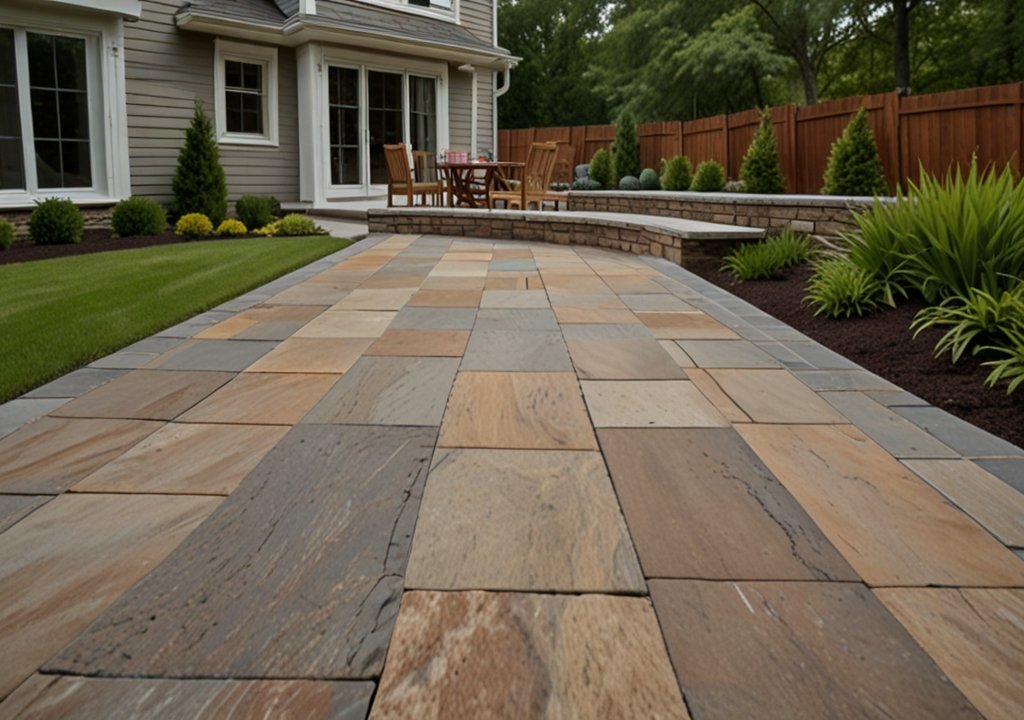Table of Contents:
- Introduction
- Understanding Your Needs
- Popular Patio Materials
- Comparing Costs
- Climate Considerations
- Maintenance and Durability
- Sustainable Options
- Safety Tips for Patio Materials
- Bringing It All Together
Introduction
Building a patio is a significant home improvement project that provides both aesthetic appeal and usable outside space. However, with so many options available, choosing the best patio materials can be overwhelming. This guide offers practical insights to assist both first-time builders and seasoned DIY enthusiasts in making informed decisions. Choosing the right material involves considering functionality, maintenance, cost, and personal taste. Understanding the intricacies of various materials may have a significant impact on your project, boosting the beauty of your house while also fitting into your lifestyle.
Understanding Your Needs
The first step in any home improvement project is identifying your needs. Consider how the space will be used—whether for entertainment, relaxation, or play. This clarity helps in choosing appropriate materials and planning the layout effectively.
Hardscape design and construction play a crucial role in transforming outdoor spaces into functional and aesthetically pleasing areas. Whether incorporating patios, walkways, or retaining walls, a well-thought-out hardscape design enhances both usability and visual appeal.
Budget is also crucial. Outline your expenses for materials and labor, and set a realistic budget that includes contingencies. Staying within your financial limits while seeking quality is essential for a successful project. A clear understanding of your needs serves as a blueprint for all subsequent decisions, ensuring a seamless and well-executed outcome.
Popular Patio Materials
Several materials are commonly used for patios, each offering distinct characteristics and setting a unique tone for your outdoor space. Here are a few popular options:
- Concrete: Known for its durability and versatility. It can be molded into various shapes and finish types, providing essential adaptability.
- Brick: Offers a classic, timeless appeal that fits well with traditional architecture. However, it is essential to consider the maintenance requirements, as bricks might move with time.
- Wood: Provides natural beauty and warmth. It’s essential to choose treated wood to resist weathering and decay, especially if you reside in a humid climate.
- Pavers: Easy to recite and available in numerous designs, pavers offer flexibility. They allow you to play with patterns and colors, adding a physical touch to your design.
The choice among these depends not only on personal preference but also on practical considerations like installation requirements, ongoing maintenance, and cost implications.
Comparing Costs
Cost is a key factor in material selection, requiring careful consideration of long-term savings versus upfront costs. For example, while concrete has a higher initial cost, it often leads to lower maintenance expenses over time, offering better long-term value. In contrast, wood is cheaper upfront but may need regular treatments and repairs. Utilizing resources like budgeting guides can help you make fiscally responsible choices for home improvement projects.
Climate Considerations
Your local climate dramatically affects the durability of your patio materials. Not all materials are suitable for every climate; for example, frost-resistant options like pavers are ideal for colder regions to prevent cracking. In areas with high rainfall, non-slip and water-resistant surfaces are preferable. Considering these factors will help ensure your patio remains beautiful and functional over time, saving you potential headaches and costs.
Maintenance and Durability

Different materials have unique maintenance needs and durability levels that are crucial in decision-making. Concrete is low maintenance but may crack over time and needs periodic sealing. Brick requires regular cleaning and sealing to maintain its appearance. Wood offers natural aesthetics but needs treatment against insects and moisture; regular care can extend its lifespan. Understanding these factors is key for a lasting investment, and looking into practical home maintenance tips can help with routine upkeep.
Sustainable Options
As eco-awareness increases, homeowners are turning to sustainable materials for patios, such as recycled wood, composite materials, and specific pavers. These options minimize environmental impact and can lead to innovative designs. Eco-friendly choices enhance aesthetics while considering the production processes, transportation, and installation, resulting in a trendy look that is good for the planet.
Safety Tips for Patio Materials
When planning your patio, safety is essential, especially in family or community settings. Use slip-resistant materials, particularly near pools or in wet climates, to reduce accident risks. Ensure adequate construction and professional installation for structural integrity. While safety may not be glamorous, it is essential for establishing a productive and comfortable environment.
Bringing It All Together
Consider the elements listed to make an informed selection regarding your patio material depending on your demands, budget, climate, and sustainability goals. Consulting professionals can offer tailored advice for your project. Choosing the right materials may improve not only the beauty of your outdoor space but also the value of your home and your quality of life. The ideal patio material balances aesthetics with durability, creating a lasting extension of your home.











